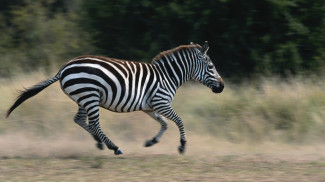The question "Why do zebras have stripes?" This is a question that has been asked a thousand times.
According to Namibian folklore, zebras were once completely white. While fighting with the baboon for the right to drink water in the waterhole, the zebra kicked the baboon so hard that the zebra stumbled into the fire and scorched the zebra's white coat, leaving thick black stripes on it.

Fables aside, why do zebras need unique colors?
In a relatively plain environment like the African savannah, it seems that any prey with eye-catching patterns will have thoughts of death. Some of the world's most revered land predators live on the African continent, such as lions, hyenas and leopards, perhaps a dusty and plain camouflage could protect these animals from detection?
Obviously not.
Some zebra species are abundant (although some are seriously endangered) and are found in different habitats across Africa. Therefore, black and white stripes should give zebras a significant advantage when it comes to successful breeding years.
Disguise
The most common theory is that the black and white vertical stripes hide zebras in any long grass. A similar theory has been proposed for tigers' stripe patterns, although this theory is more widely accepted due to the denser vegetation and dappled shading of tiger habitats.
Another camouflage theory suggests that a zebra's stripes may camouflage the zebras within the herd. It's hard to focus on a swarm of destructively camouflaged objects moving around each other. Individual zebras are difficult for any predator to identify.
Nasty Flies
It has been noted that the zebra's black and white stripes serve to protect against insect bites.
Zebras were used by colonists as pack animals, rather than other equids such as horses and donkeys, because of their apparent immunity to horsefly bites and the trypanosomiasis they carry.
Identification
Zebra stripes are unique to each person, just like human fingerprints. Perhaps zebras can identify family or specific group members by their unique patterns? It's unclear whether zebras use patterns as a means of identification.
Ultimately, the actual function of zebra stripes is likely a combination of several reasons, all of which further push the pattern toward the extreme contrasting stripes we see today.
We created this article in conjunction with AI technology, then made sure it was fact-checked and edited by a Animals Top editor.